5 Stars
Absolutely stunning piece! Just like in the pictures.
We are a handmade business 🙂 Processing time is 1-2 business days.
PAYPAL, AFTERPAY available 🛍️



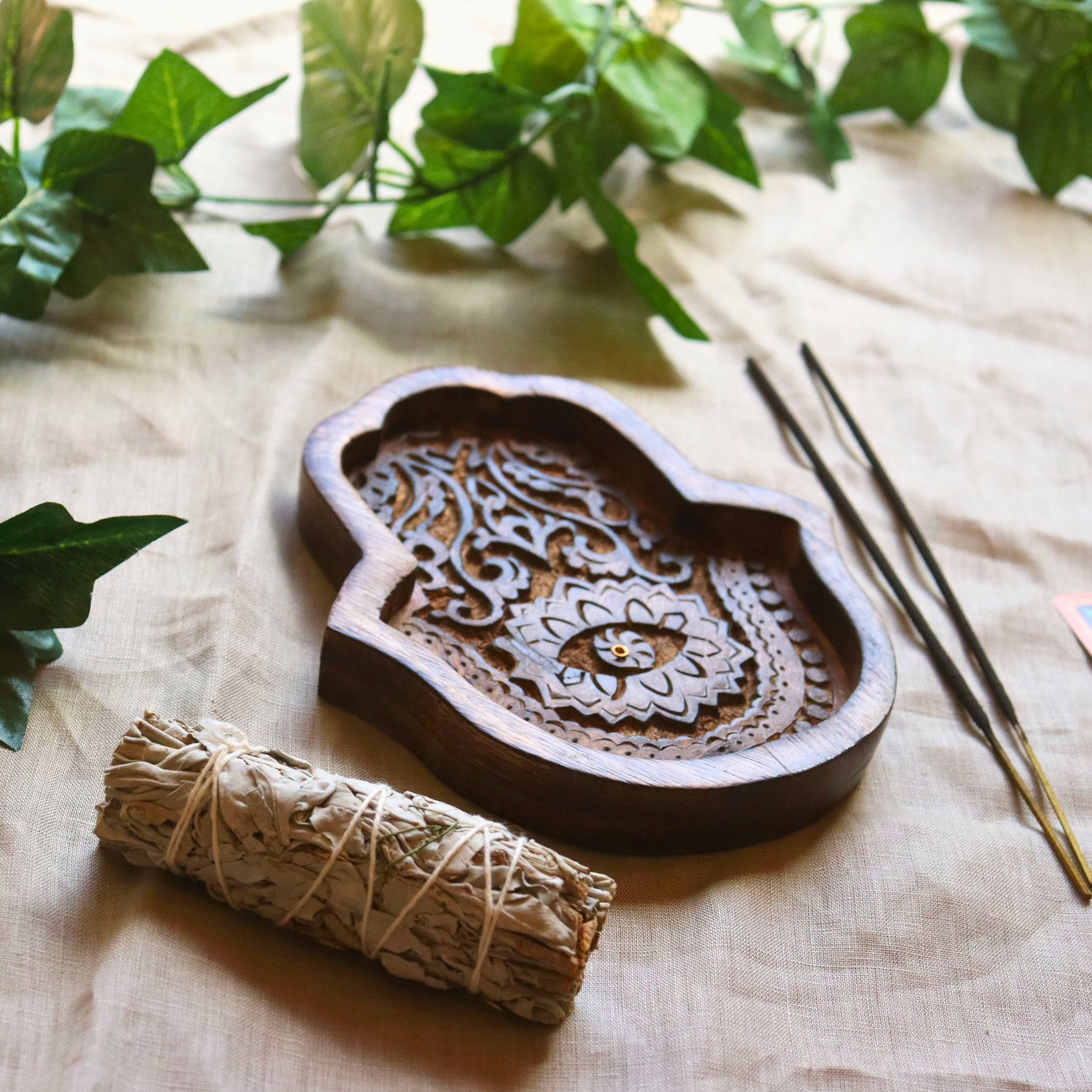
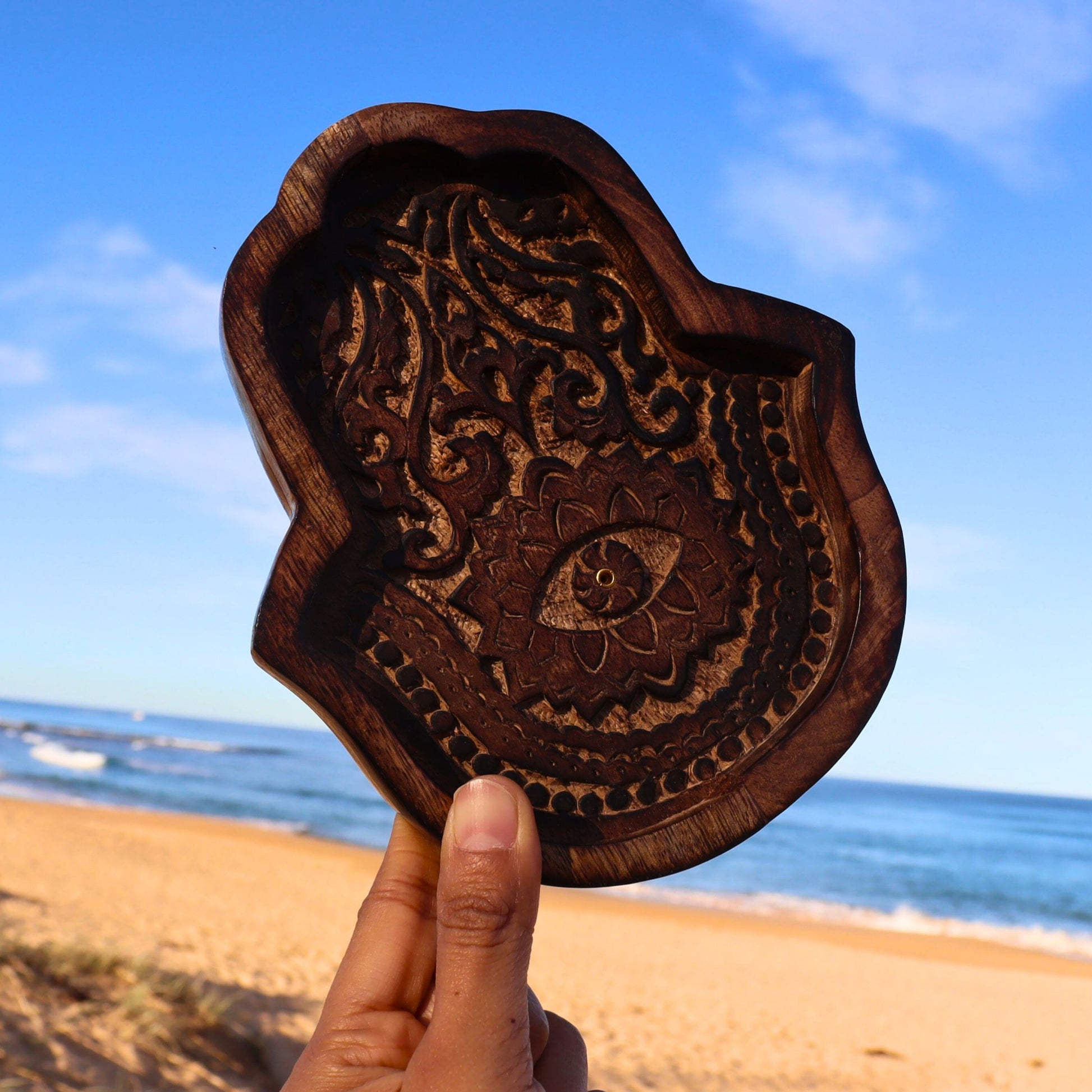
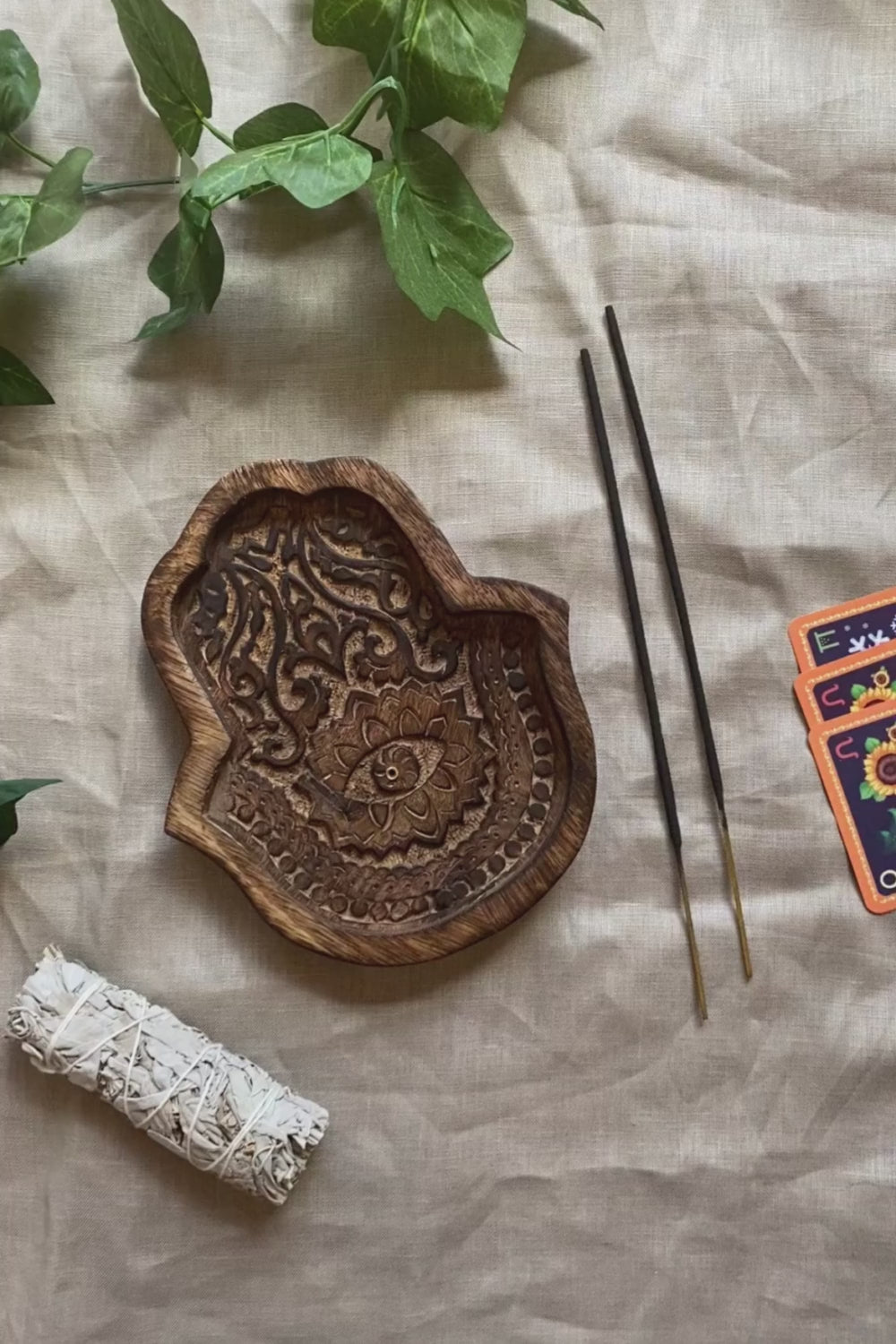




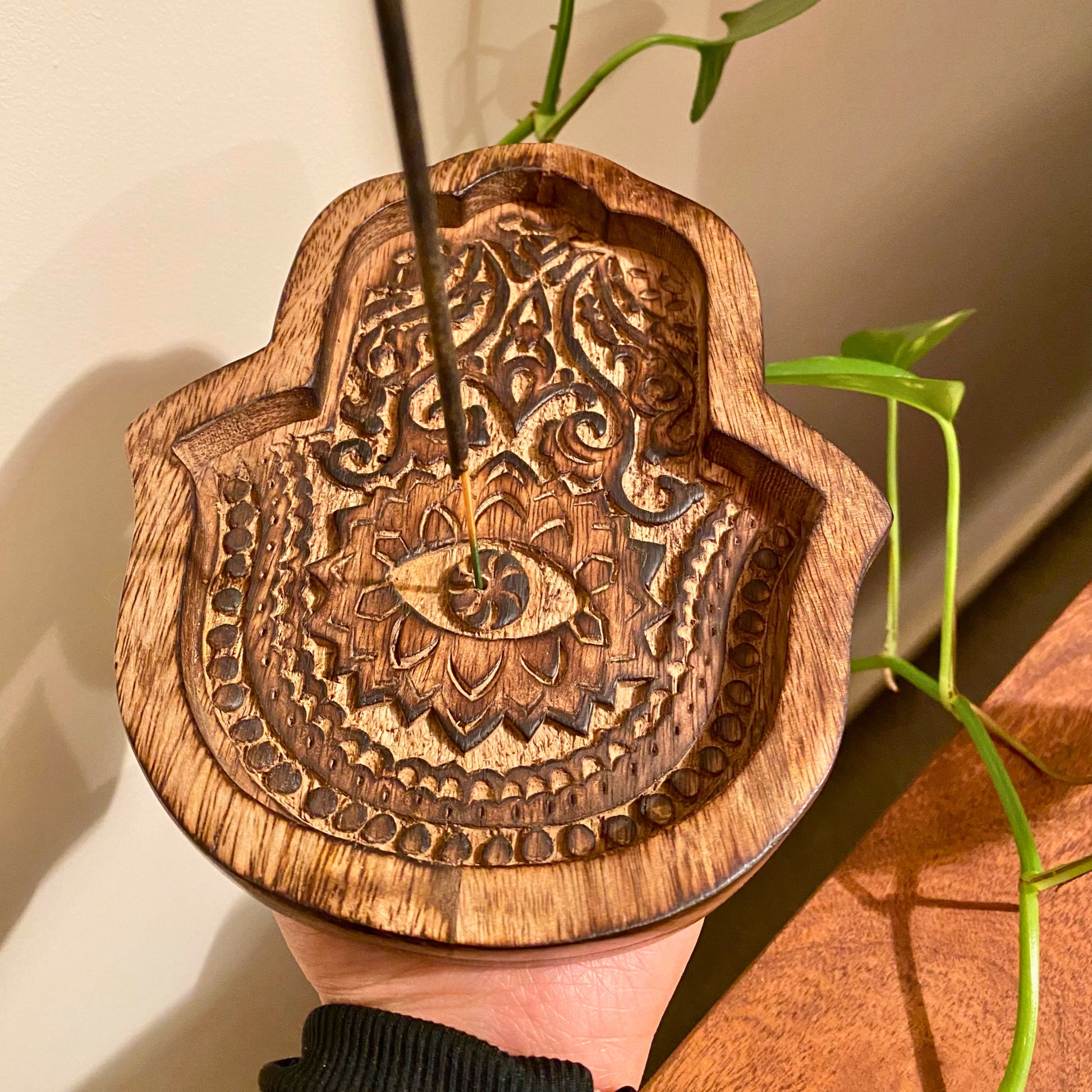
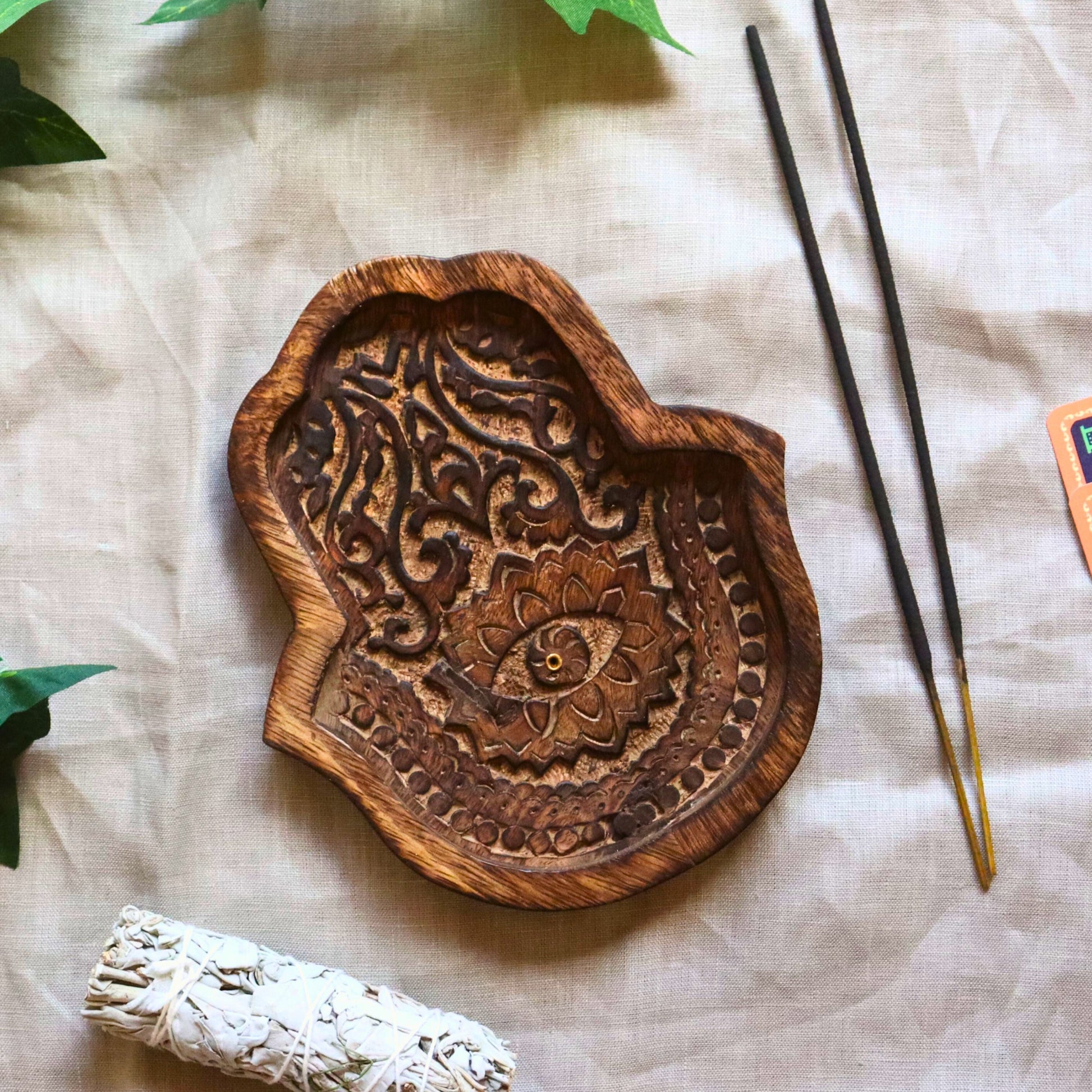
Couldn't load pickup availability
Do you love to fill your house with aroma by burning incense? Scent has the power to not only create a great feel but even instantly shift moods.
Forget the stock-standard wooden burner, this Hamsa incense holder is a must-have for any home. This natural wooden incense stick holder is perfect for holding and catching the ash from the burning incense stick. It is aesthetically pleasing on a tabletop.
The hamsa or "evil eye" is considered a symbol of good fortune and luck. Often seen in the Middle East and North Africa, this protective talisman was traditionally used to ward off negative energies by those who believe it can protect their homes from evil spirits! The palm-shaped amulet is often used in jewellery and home decor items. The design provides an interesting, earthy feel you don't find elsewhere.
In Indian culture, Hamsa means "five" and is thought to represent the fingers of our hand. It is considered a symbol for our chakras, energy flow, five senses, and mudras that affect them.
Create an inviting atmosphere for friends and family to spend time together. Discover the beauty and symbolism they hold, and let your space resonate with the energy of serenity and spirituality.
Features
Dimensions
Note

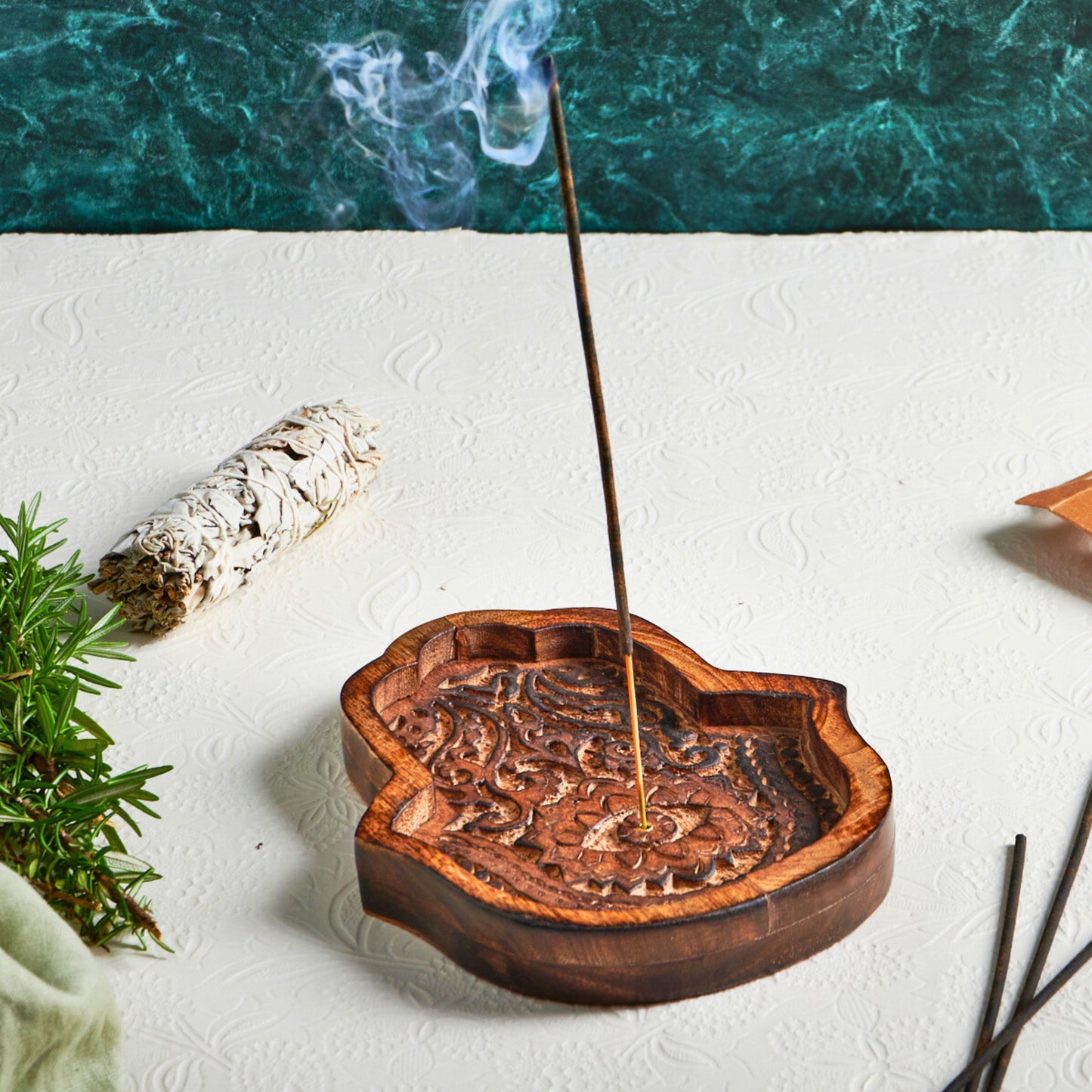
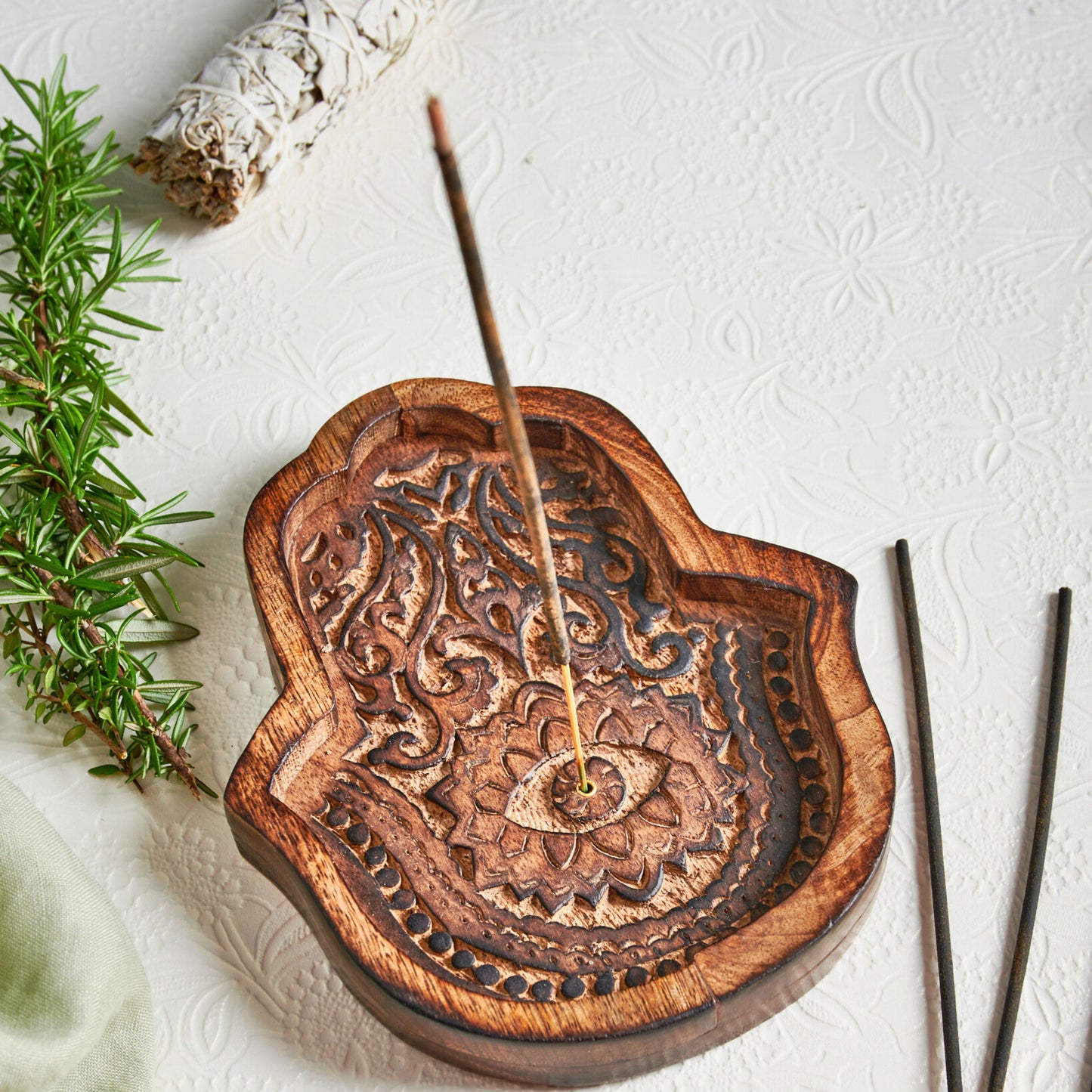
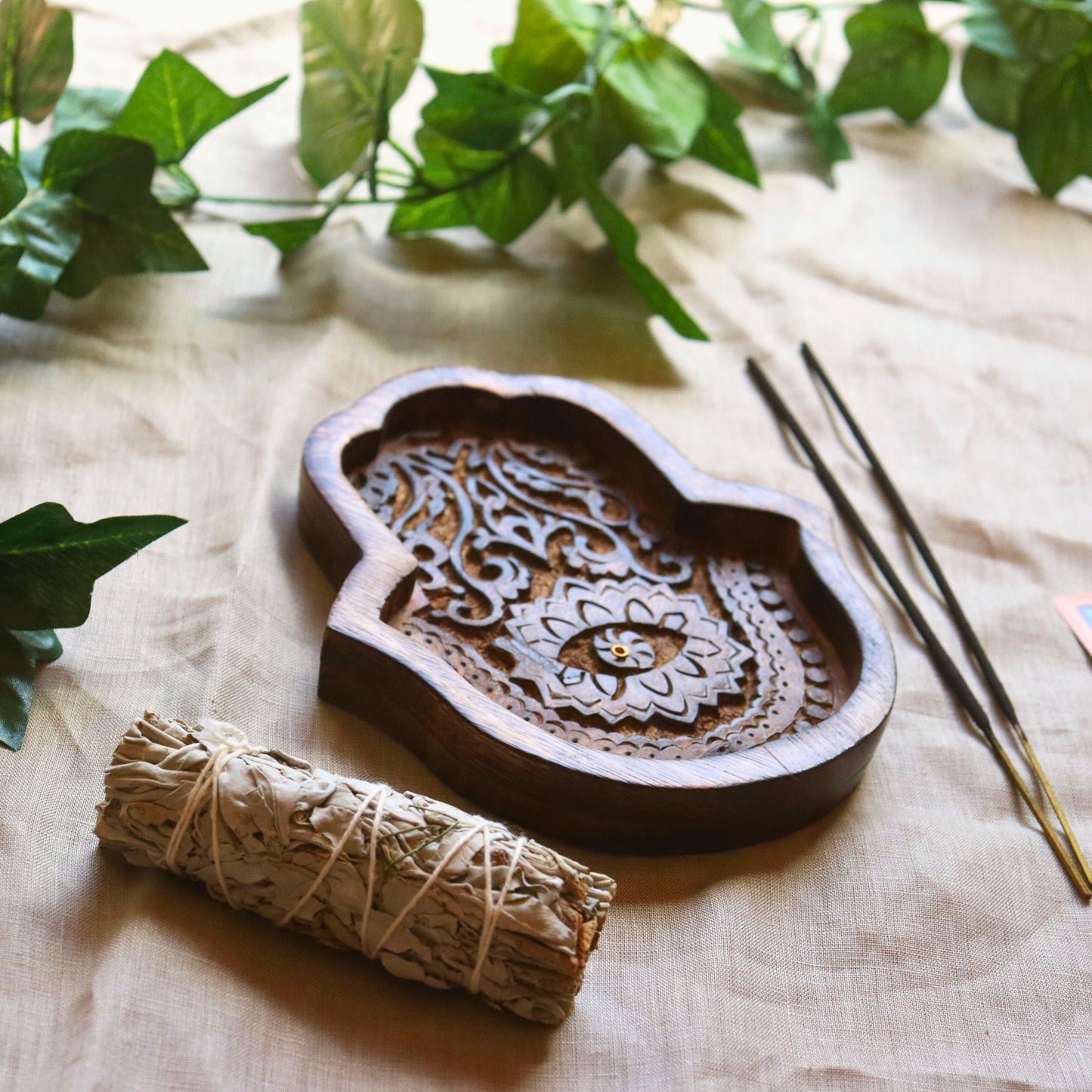

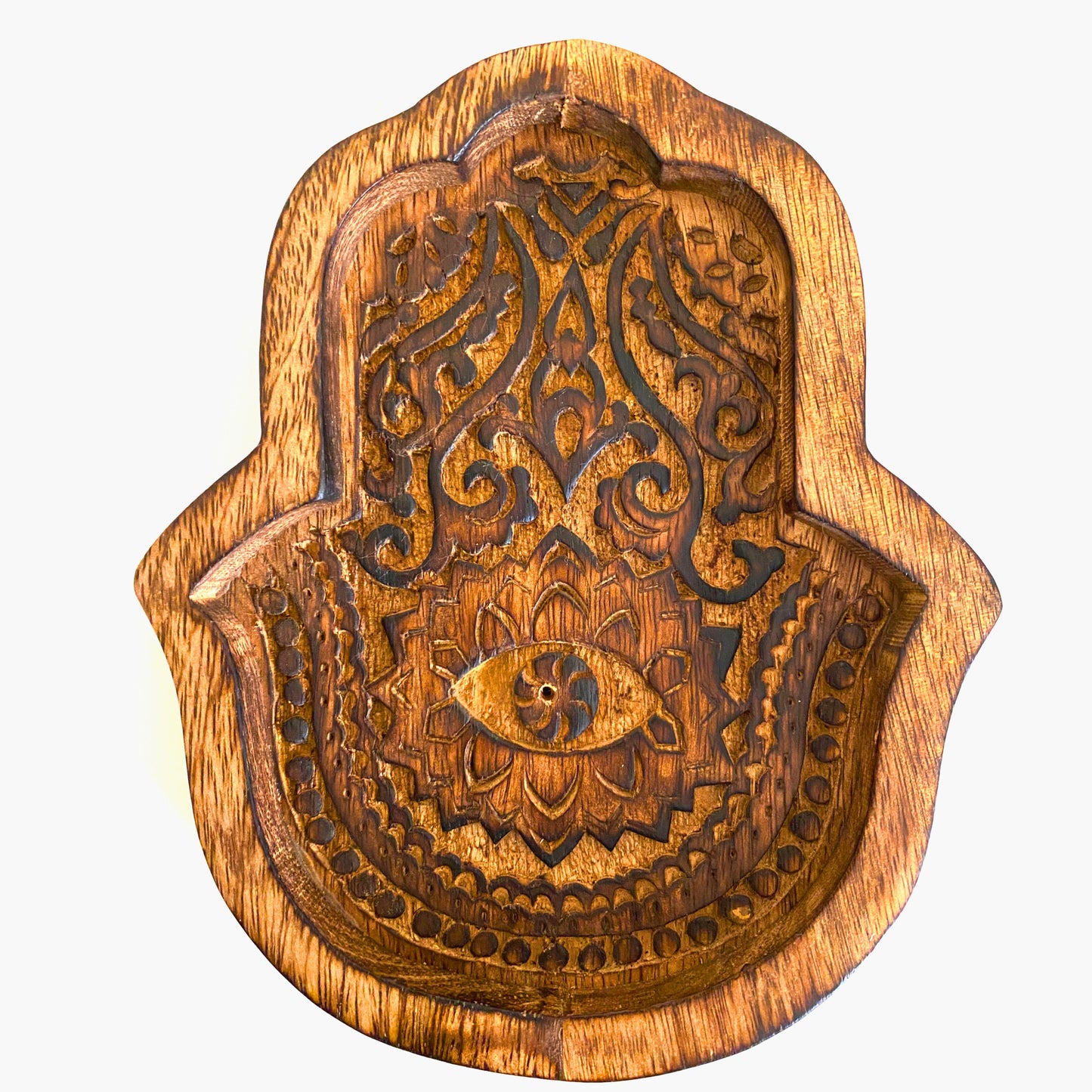




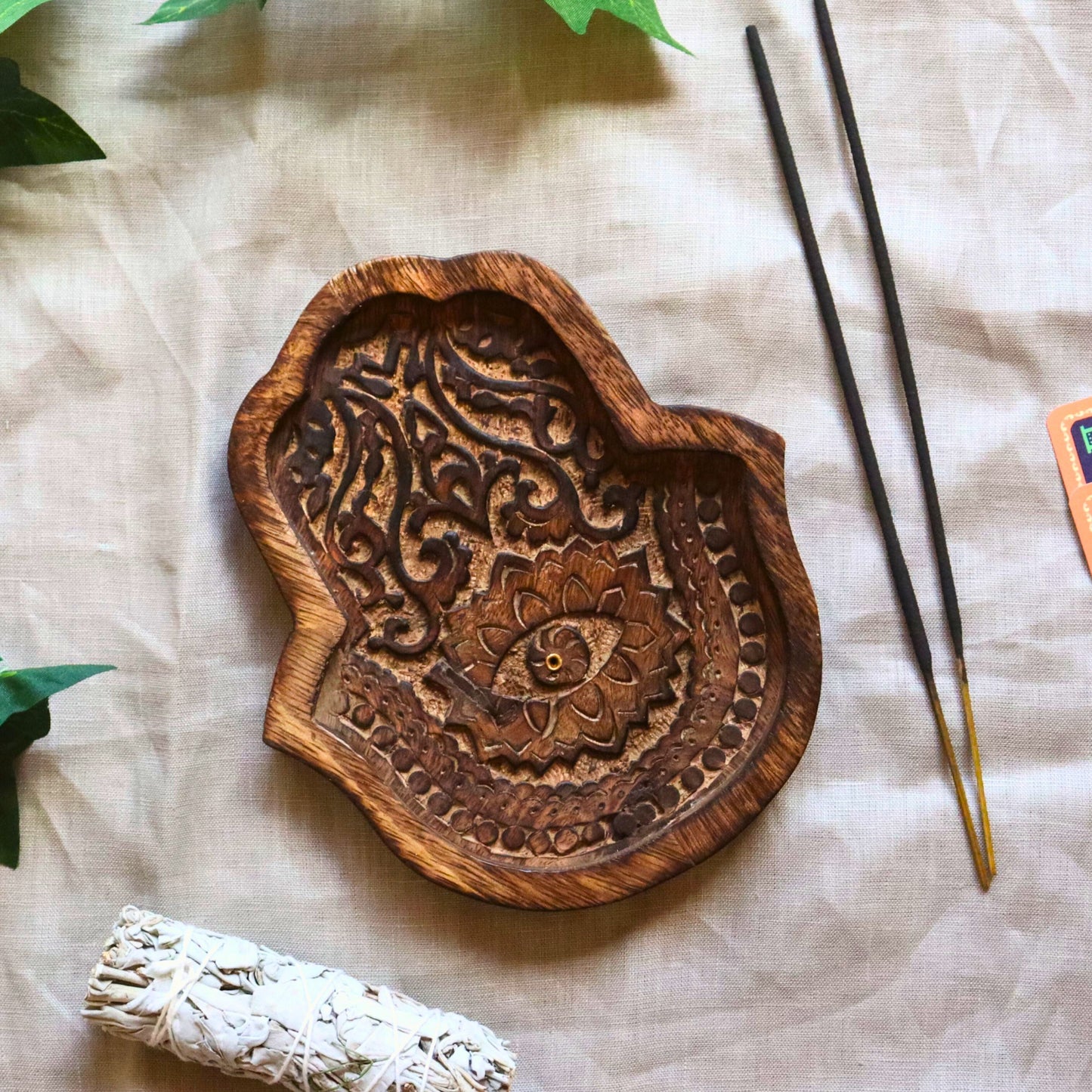
$10 Fixed standard shipping fee is waived off when the order value is $75 or above (AU) and $100 or above (NZ).
Choose your favourite service - AfterPay, Zip, Latitude Pay, Klarna
Absolutely stunning piece! Just like in the pictures.
Since centuries, wood has provided fire, shelter, tools, and supported so many inventions e.g. the wheel. Woodcraft in India is dated back to the ancient times of Maharajas. Initially, the art was limited to carving sculptures and windows of temples and palaces. Over many generations and under the influence of its region's culture and locally available wood the art form has evolved and now extends to articles like furniture, decorative pieces, storage boxes, table lamps, toys and puppets.
Wood can belong to either of the two categories - softwood or hardwood. Technically, softwood comes from the botanical group Gymnospermae and hardwood comes from the botanical group Angiospermae.
Most softwood are evergreen, have no flowers and develop their seeds in cones (coniferous). They are usually fast growing. This makes them the most widely used woods commercially. Indian Sandalwood is an excellent example of softwood. It has a fragrant resin, thus is highly sought after for making religious images.
Hardwood are usually slower growing than softwoods. They have dense wood lending itself to greater structural integrity than softwood (durability), and is less prone to insect damage. A few examples are walnut, mahogany, balsa, oak, chestnut, elm, teak and sycamore.
India has an abundance of native wood that lends well to the carving and inlay work. Some examples are Ebony, Rosewood, Sandalwood, Sheesham, and Sal.
The diversity of each region's style and carving technique reflects in the motifs, and patterns on each carved article. The geometrical and floral patterns are the most popular. When an object is carved from a single block, it is believed that the spiritual energy inherent in the tree remains more concentrated.
To produce a beautiful carving from a block of wood requires sharp tools, suitable timber, and planning. Once cut, the wood can not be reattached and thus the artisan has to be careful while shaping his pattern. Finest carding is possible on hardwood due to its ability to split less, and wide range of colours.
There are quite a few carving techniques, some of which are mentioned below.

Pic: Relief carving used on an Architectural Ensemble from a Jain Meeting Hall

Pic: Nested dolls in a park setting
Once our artisan has craved the product, they can employ a range of decorating and finishing techniques to create the final product. Example of such decorations are paintwork, inlay (insetting shapes into cuts made in the wood), banding, and marquetry (pieces are glued to the surface of a piece of wood).

Pic: example of inlay set in Tic Tac Toe Game Set
In many regions, woodcraft production is vital for community livelihoods. By participating with Fair Trade organisations, we contribute to alleviating poverty and promoting sustainability through ethical practices. These organisations aim to educate and empower disadvantaged sections of the Indian community by providing them with job opportunities, gender equality, fair wages, safe and healthy working environment while preserving the local culture & traditional skills.
Wood - the world of woodwork and carving
